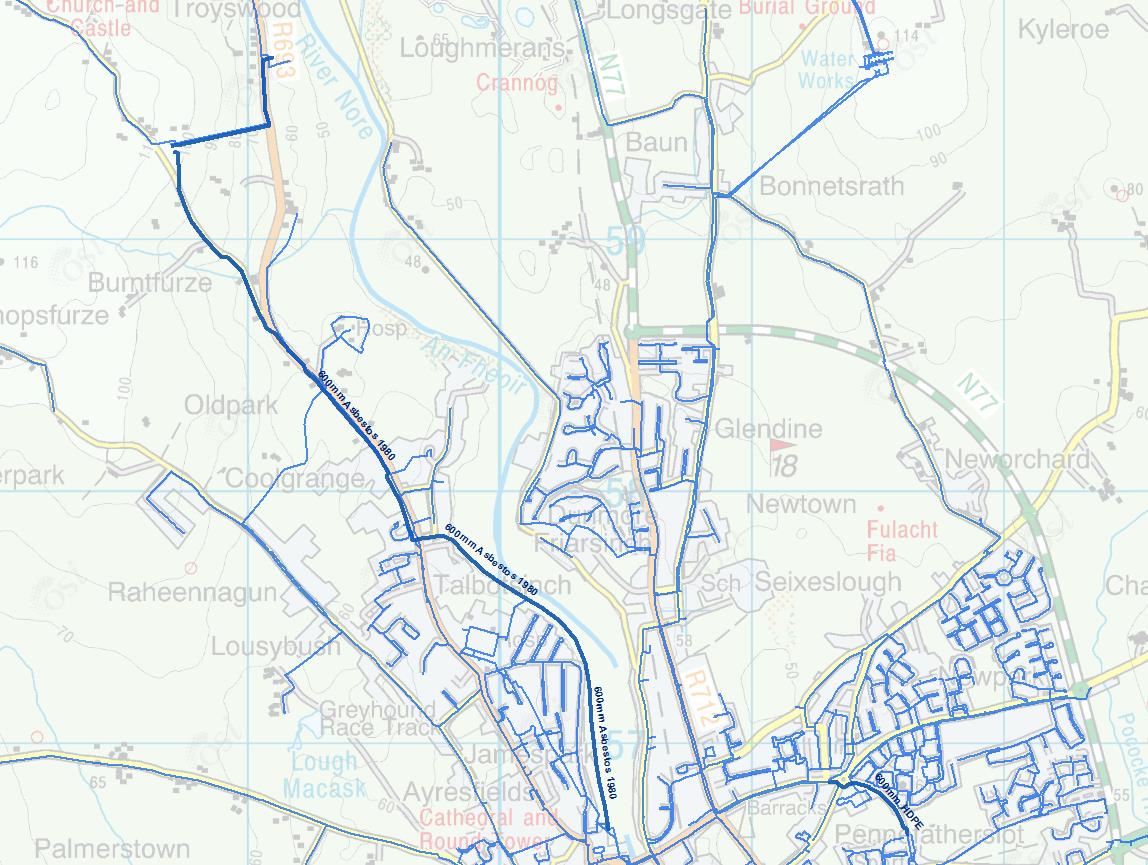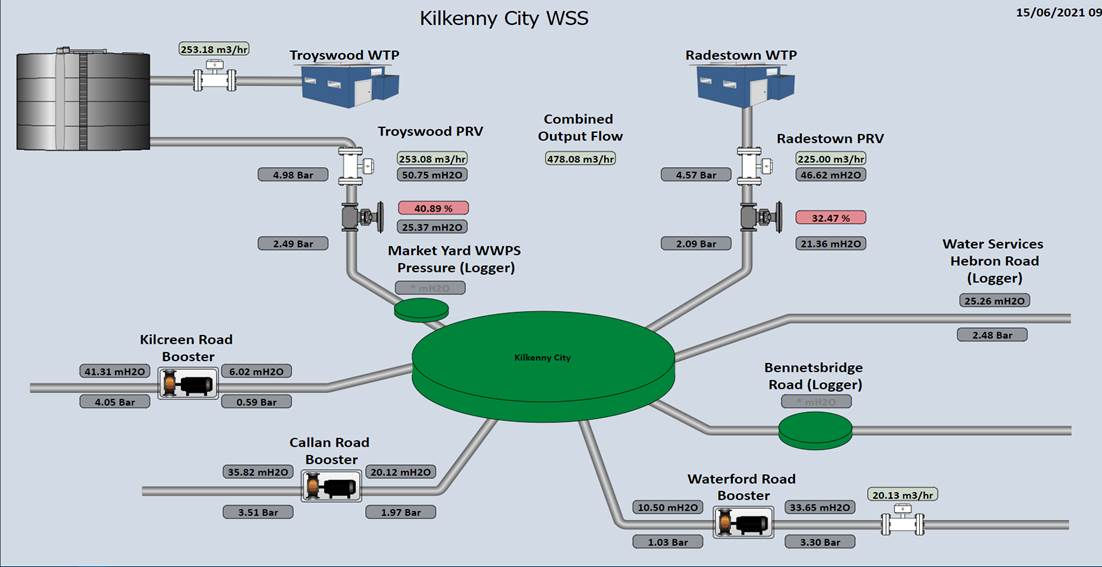Water Pressure Management
Kilkenny City is a medieval town in southeast Ireland and is situated in the Nore Valley on both banks of the River Nore. Kilkenny is a tourist destination known for its historic building’s public gardens and museums. The 2016 census gave the total population of Kilkenny as 26,512.
Kilkenny City Council were having on going issues with leakage on the network and water management from the two water treatment plants (WTP) that feed the city its drinking water, Troyswood and Radestown WTP’s. The water is then fed through trunk mains surrounding the city to the distribution network supplying customers. Working on behalf of Ward and Burk Construction Ltd. under the Irish Water pressure management project in Kilkenny City to upgrade the City’s water network to ensure supply and reduce interruptions.


